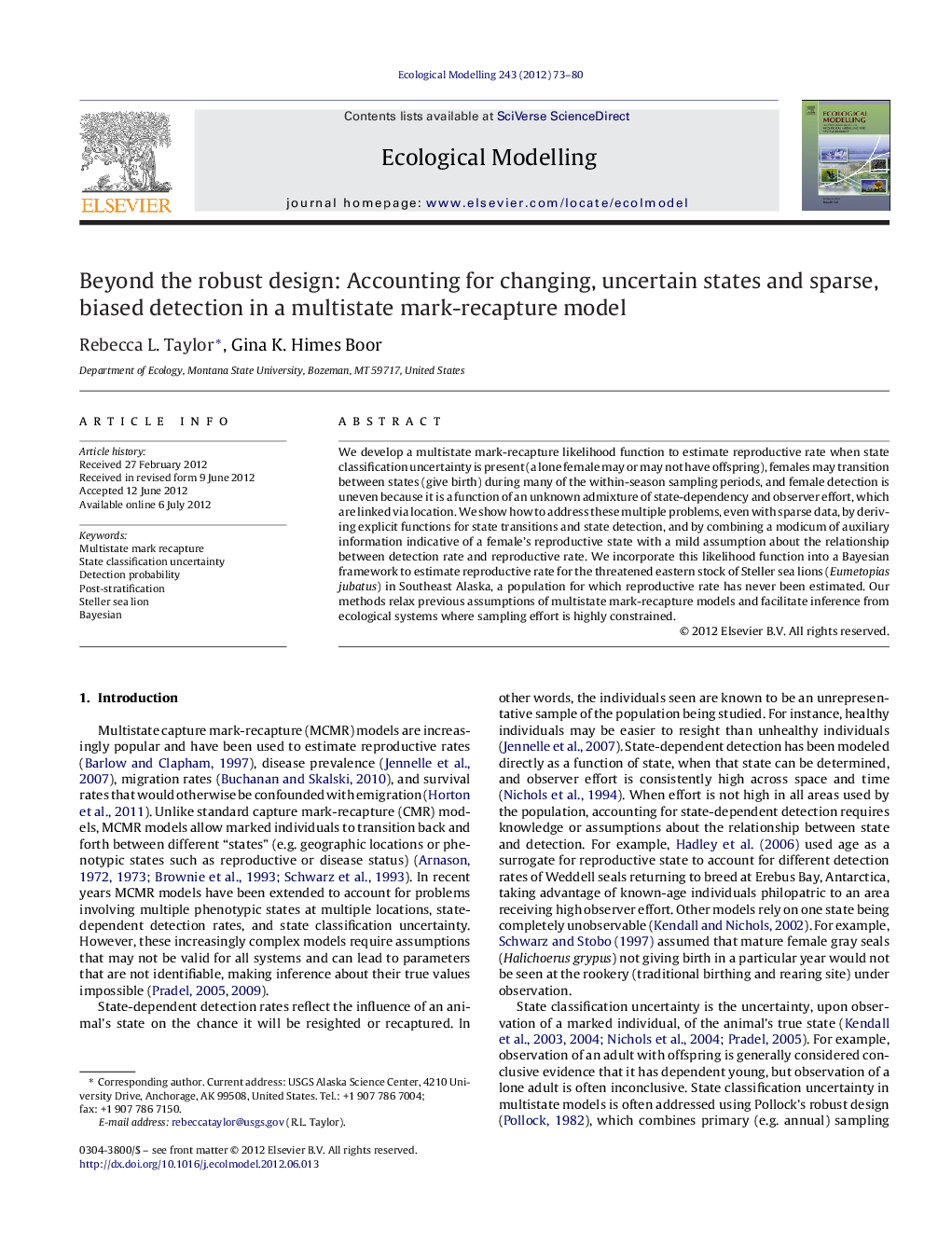| Article ID | Journal | Published Year | Pages | File Type |
|---|---|---|---|---|
| 4376334 | Ecological Modelling | 2012 | 8 Pages |
We develop a multistate mark-recapture likelihood function to estimate reproductive rate when state classification uncertainty is present (a lone female may or may not have offspring), females may transition between states (give birth) during many of the within-season sampling periods, and female detection is uneven because it is a function of an unknown admixture of state-dependency and observer effort, which are linked via location. We show how to address these multiple problems, even with sparse data, by deriving explicit functions for state transitions and state detection, and by combining a modicum of auxiliary information indicative of a female's reproductive state with a mild assumption about the relationship between detection rate and reproductive rate. We incorporate this likelihood function into a Bayesian framework to estimate reproductive rate for the threatened eastern stock of Steller sea lions (Eumetopias jubatus) in Southeast Alaska, a population for which reproductive rate has never been estimated. Our methods relax previous assumptions of multistate mark-recapture models and facilitate inference from ecological systems where sampling effort is highly constrained.
► We develop a new multistate mark-recapture model. ► We model state classification uncertainty and state- and effort-dependent detection. ► The model applies when state is in transition and resighting is uneven and sparse. ► We demonstrate the model by estimating reproductive rate for Steller sea lions. ► Our model relaxes previous multistate model assumptions for broader applicability.
